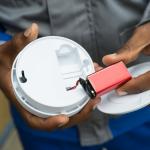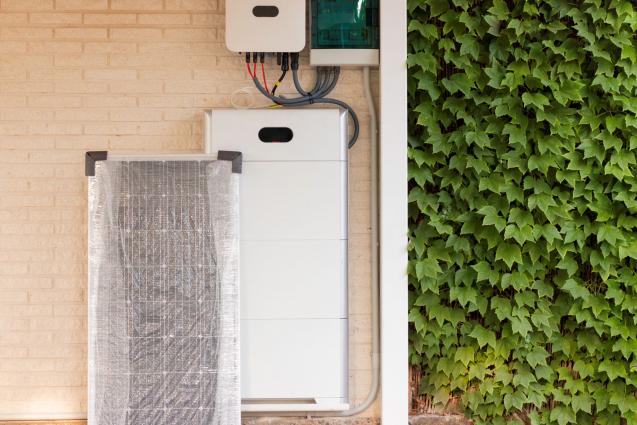
Essential Steps to Follow When Changing a Smoke Detector Battery
Regular battery checks and timely replacements are non-negotiable tasks for ensuring your home's safety. Ill-timed failures could render your fire alarm system useless when needed. We've compiled this comprehensive guide to help you understand when your smoke detector battery needs replacement and the steps to carry it out effectively.
Understanding the Importance of a Smoke Detector
Smoke detectors work twenty-four hours a day, seven days a week, all year round, to ensure our homes and loved ones are safe from fires. They are designed to detect the presence of smoke that arises in the event of a fire. Once detected, they deliver a loud, penetrating alarm that could save lives and property.
The link between fully functional smoke detectors and home safety is not merely theoretical but a fact cemented by statistics. The National Fire Protection Association reports that home fire deaths are twice as likely in homes without functional smoke detectors. Neglecting these devices, therefore, is a decision fraught with peril.
Indeed, not maintaining your smoke detector in optimal working condition poses a severe risk of dangerous fire outbreaks and can also be devastating for your physical well-being and survival. Therefore, it is paramount to remember the centrality smoke detectors hold in our lives, emphasizing the crucial process of timely battery replacements.
Identifying Signs Your Smoke Detector Battery Needs Changing
Different smoke detector models rely on diverse types of batteries, some of which can last up to a decade. But no matter what type of battery your smoke detector uses, it's advisable to test the device’s performance at least once a month to ensure it's functioning correctly.
These monthly tests also serve to recognise when the battery may need replacing. If your smoke detector produces an intermittent chirping sound or a repetitive beep, this is likely an indication of a low battery level, a signal reinforced by the device manufacturer.
However, don't ponder the issue if your detector is prone to false alarms or fails the monthly test. It might be a signal for immediate battery replacement. It's always better to err on the side of safety; after all, the value of a functional smoke detector is priceless.
Choosing the Right Battery for Your Smoke Detector
Smoke detectors can use a range of batteries, including alkaline and lithium batteries. Some are hardwired into your home's electrical system yet possess a backup battery to serve during power failures. It's essential to ensure you choose the right replacement battery for your smoke detector in accordance with the manufacturer's instructions.
In unexpected circumstances, keeping an extra reserve of backup batteries at home is a smart decision. Battery-operated detectors still require energy during blackouts, and having spare batteries helps ensure that your home is always protected.
When disposing of old batteries, it's necessary to do so conscientiously. Rather than tossing them in the trash, consider taking them to a recycling centre to help minimise environmental damage.
Step-by-Step Guide to Changing Your Smoke Detector Battery
When you identify the need to change your smoke detector battery, here is the step-by-step process to follow:
Step 1: With gentle application of force, dismount the smoke detector from its position without causing any physical damage to the device. This usually involves disengaging the device from its base by sliding or twisting motions.
Step 2: Open the battery compartment, which is typically located at the back of the detector, by unclipping or removing a screw (if present). Carefully remove the old battery without causing any damage to the compartment.
Step 3: Insert the new battery in the compartment, ensuring it goes in the correct orientation. Most devices will have symbols for plus (+) and minus (-) to guide you about placing the battery in the correct position.
Step 4: After replacing the battery, place the smoke detector back where it was originally mounted. Firmly secure it in its position, ensuring the base is tightly attached to the mounting surface.
Confirming the Functionality of the New Battery
With the new battery inserted in the device, testing the smoke detector to confirm its functionality is important. Most detectors come with a 'test' button specifically for this purpose. A successful test typically emits a short, sharp, and loud beep or series of beeps.
Don't ignore the issue if the device fails this test or does not deliver the expected test results. It may signal the need for a complete smoke detector replacement.
Remember, smoke detector maintenance is not a singular event. It's imperative to commit to an ongoing process of annual maintenance, testing your detector and replacing its batteries when necessary to ensure its optimal performance and, in turn, the safety of your home.
Conclusion
Without question, an operative smoke detector is a paramount safety feature in your home, and the pathway to this is through a regular schedule of maintenance and battery replacements. It might seem like a minor effort, but these routine activities could be instrumental in saving lives and property—a significance that can't be overstated.
With this guide, we hope you understand the essential steps in changing a smoke detector's battery, from identifying when to replace it to confirming the new battery's functionality. Beyond the steps, though, is the underlying message about these devices' crucial role and the importance of keeping them functioning optimally.
Learn more about maintaining your smoke alarms effectively, recognising the signs of battery replacement, and addressing the need immediately. Indeed, a well-maintained smoke detector is necessary for safeguarding not only your home but also the lives of your loved ones.



